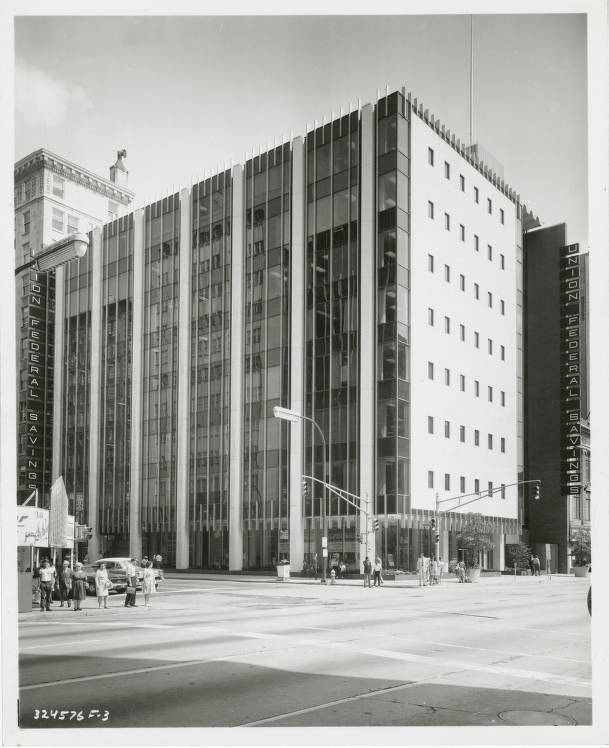Union Federal Savings Bank traces its origins to 1887 when it began as the Indianola Building and Loan Association. The business converted to a federal savings and loan association 50 years later. Union Federal is not to be confused with a separate enterprise, the Union Trust Company, founded in 1893. which merged with in 1950.

Union Federal Savings Bank building, ca. 2004 Credit: Bass Photo Co Collection, Indiana Historical Society View Source
In 1948, Union Federal opened its first branch at 7 East Maple Road (38th Street) and expanded again in 1959 through a merger with Colonial Savings and Loan. It continued to grow over the next two decades, opening its first branch bank inside a Marsh grocery in 1981. By the early 1990s, Union Federal had more than a dozen such branches associated with the chain.
The early 1980s were difficult for savings and loans nationally, and Union Federal was no exception. Rising interest rates on deposits could not be recouped through money earned on low-interest, long-term, fixed-rate mortgages. A series of unwise commercial loans compounded Union Federal’s problems. It had been losing money at an average rate of $4.5 million every six months beginning in 1980 and, by early 1982, had a negative net worth.
In September 1984, Fort Wayne-based Waterfield Mortgage Company paid $6.1 million in cash to acquire Union Federal, with help from the Federal Savings and Loan Insurance Corporation (FSLIC). At the time, Union Federal had 11 Indianapolis-area offices and showed a negative net worth of $20 million.
Waterfield instituted changes after the buyout, selling off $130 million in mortgages and adding automobile loans, consumer loans, and an expanded variety of mortgage products for Union Federal customers.
In 1986, Union Federal received permission from federal regulators to convert to a savings bank, becoming the Union Federal Savings Bank, and magazine named it the number one thrift in its class in the country for return on assets.
Over the next year, Union Federal acquired the struggling Community Federal Savings and Loan Association of Hamilton, Ohio, near Cincinnati, in another deal arranged by the FSLIC. The merger gave Union Federal assets of $1.2 billion and a total of 33 branch offices. By the early 1990s, Union Federal had 35 Indianapolis-area branch offices. Employing almost 550 people, the bank’s total assets exceeded $1.4 billion.
Union Federal continued to exist until the mid-2000s when it became part of a series of mergers. First, it merged with the Ohio-run Sky Bank group in late 2006 before merging with Huntington National Bank less than a year later. By 2020, Huntington maintained 18 branches in the Indianapolis area.

Help improve this entry
Contribute information, offer corrections, suggest images.
You can also recommend new entries related to this topic.